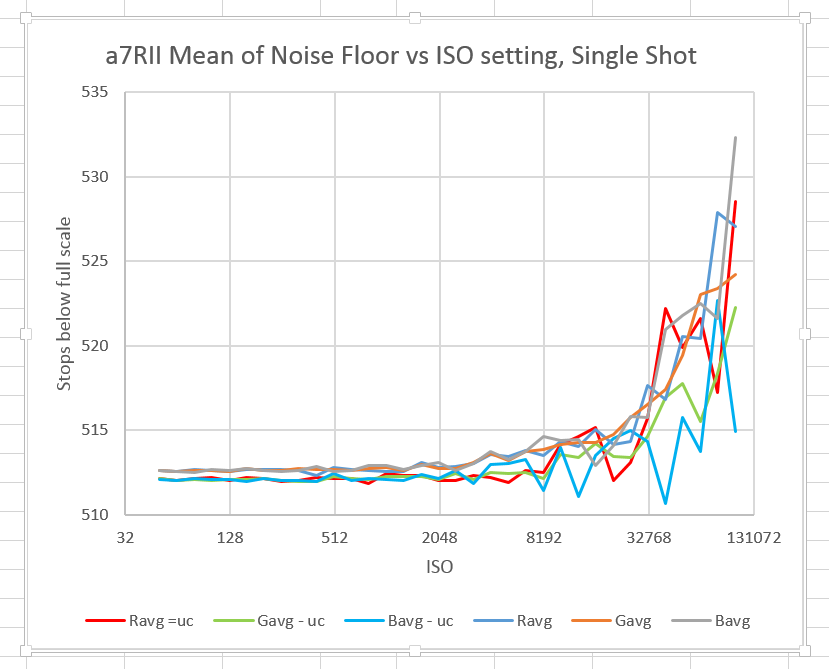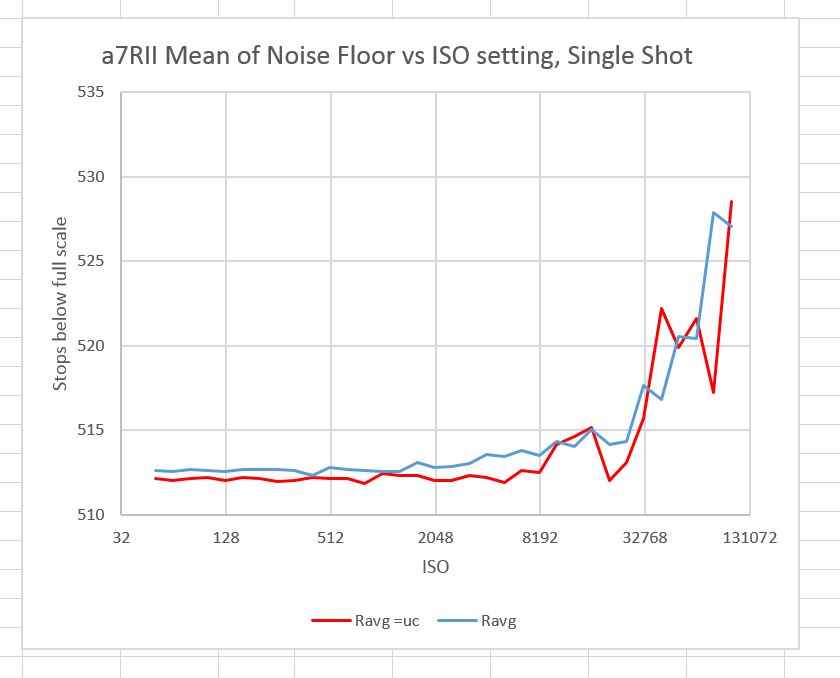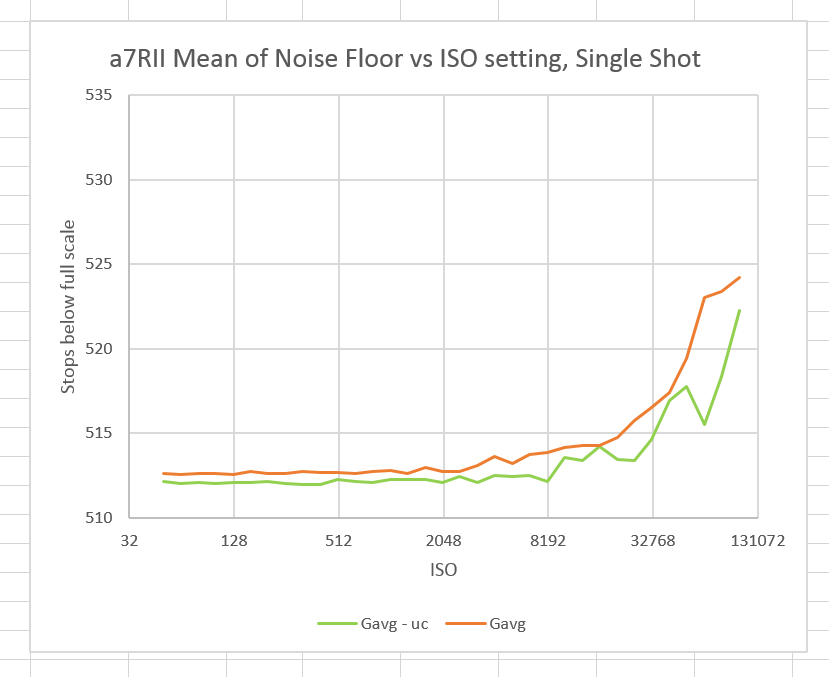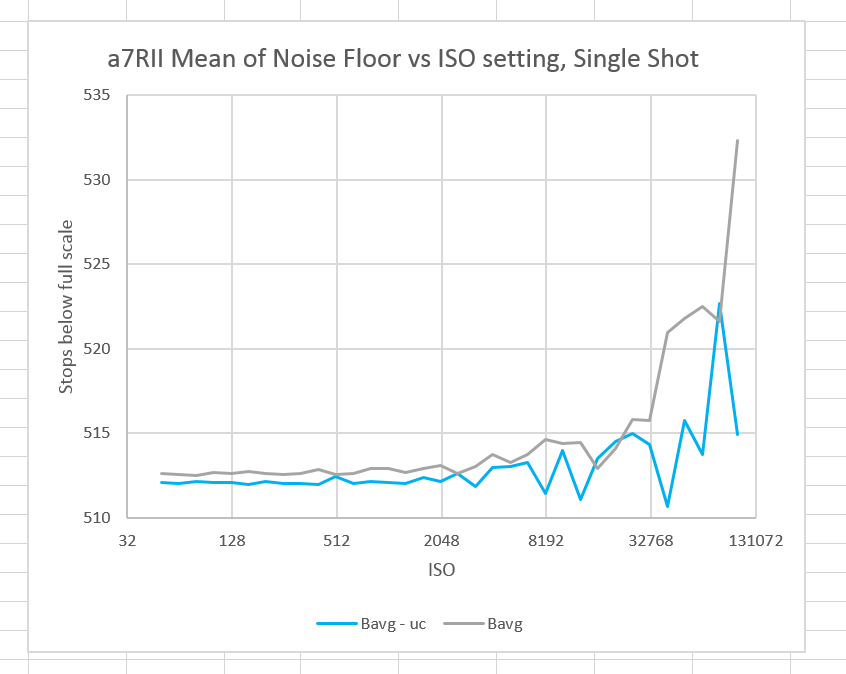Jack Hogan, in a comment to an earlier post on the rms noise values of uncompressed and compressed Sony a7rII dark-field images, wondered if there was digital multiplication going on, and, if so, would the mean values be affected.
I took a look at the mean values of a 200×200 central square of the same raw dark-field images that I’d used for the earlier posts:
Ignore the vertical axis label; it’s just raw count. Can’t tell much with all three (r, b, and one g) channels, can we?
Red:
Green:
Blue:
The high-ISO values appear to be too noisy for much in the way of conclusions. However, at the low ISO values, there is a systematic bias, with the compressed (no suffix) means being higher than the uncompressed (“- uc” suffix) means. The difference is only about half a least-significant bit, with the uncompressed values closer to the nominal black point of 512.
It is possible that this is real. It is also possible that RawDigger’s compressed file rounding algorithm is slightly different from Sony’s. If various raw developers use different rounding algorithms, we could see raw developer dependent color shifts on extremely hard-pushed images. If the slight offset is real, then we could see raw developer independent color shifts on extremely hard-pushed images.
It is also possible that we are observing a self-heating effect; the compressed exposures were made immediately after the uncompressed ones. Nope; that’s not it; I just looked at the a7II results; where I made uncompressed, then compressed, then uncompressed again sets of exposures. I see the same kind of thing there.




Jack Hogan says
Thank you for doing this Jim. It does look like the uncompressed mean black level starts rising at about ISO10,000 when the second digital scaling factor appears to kick in.